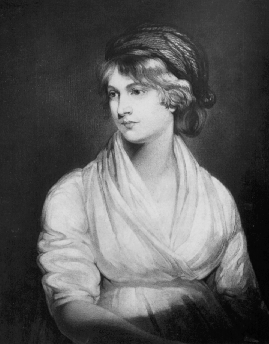 |
 |
 |
 |

Although Mary Shelley never knew her mother, she held her in the deepest veneration. There was probably no better student of Mary Wollstonecraft's writings than she, for she read them again and again and, when she traveled to Italy in 1818, seems to have carried something close to a complete set for reference. Her decision at the age of sixteen to elope with a married man suggests how deeply, even problematically, she had inculcated her mother's free spirit. Indeed, she and Percy Bysshe Shelley affirmed their love for each other while seated on the grave of her mother in St. Pancras churchyard, as if to affirm her blessing of their union. If Mary Wollstonecraft had to argue the case for a woman's integrity as a human being against fundamental cultural opposition, her adolescent daughter could simply assume it as her right and expect assent from both her father and her future husband.
Both her mother's influence and her own youthful self-assertiveness should not be underestimated. They clearly stand, for instance, in marked contrast to the closely circumscribed expectations of the women figures in Frankenstein. Although these portrayals have been read as indicating Mary Shelley's retreat from her mother's radical posture, it is more likely that the limitations shared by all the women figures indicate a deliberate artistic choice through which she means to emphasize the often implicit but crushing weight exercised by patriarchal authority in the novel.
There are two further areas in which Frankenstein seems to register Mary Wollstonecraft's influence on her daughter's thinking. One is in the extensive record of travel in the novel, part of which is filtered through Mary Shelley's first published work, A History of a Six Week's Tour, an account that in its small way appears to emulate her mother's masterful Letters Written during a Short Residence in Norway, Sweden, and Denmark. The second influence is more direct and telling. There exists no closer model in literature for the existential isolation of Victor Frankenstein's Creature than Wollstonecraft's haunting portrait of the orderly in the insane asylum to which her heroine of Maria, of the Wrongs of Woman is confined. Jemima's first-person narrative of her wholly marginalized existence reverberates across the similar autobiographical account that stands at the middle of Mary Shelley's novel.